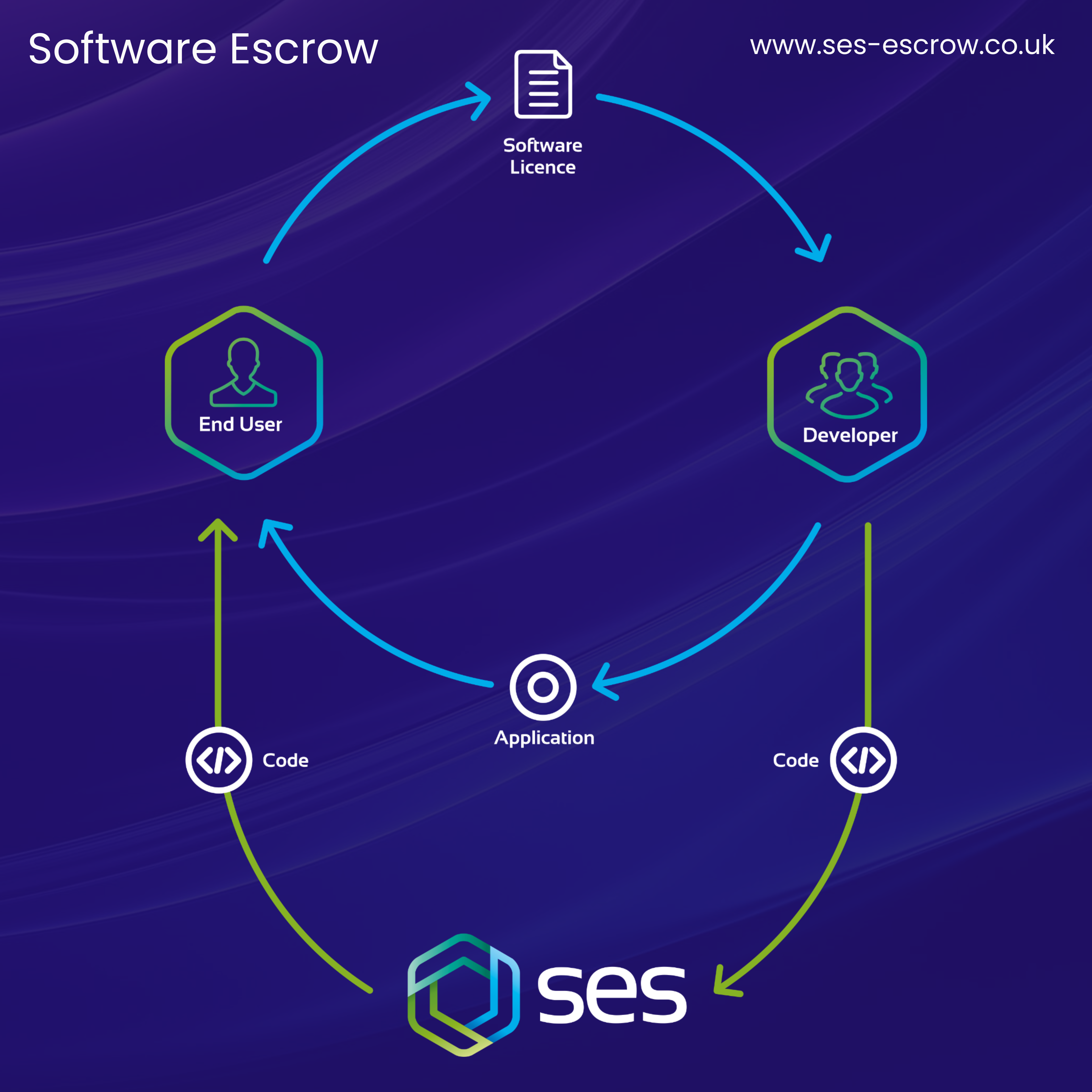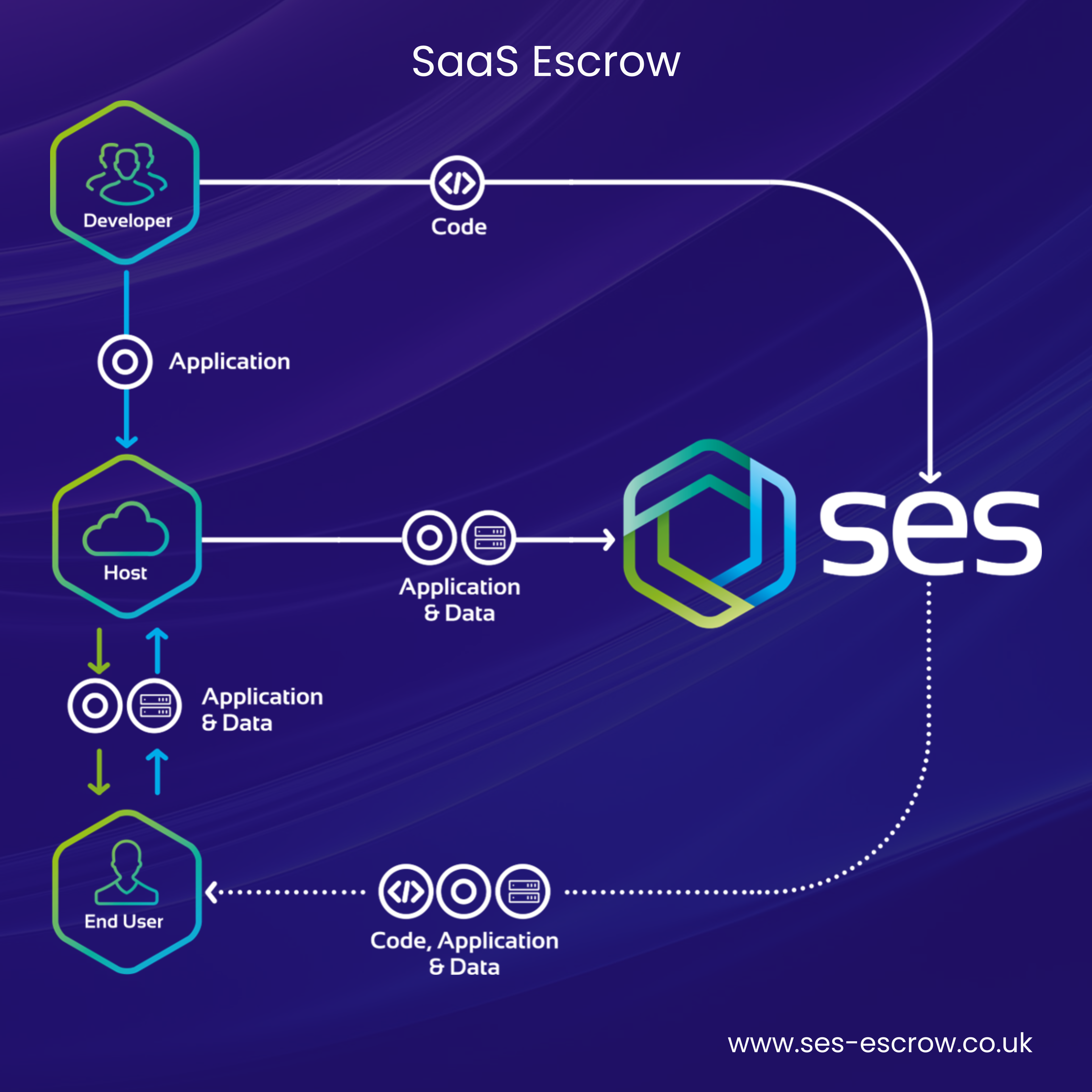As mentioned in previous blogs, for those that are unfamiliar with Software Escrow terminology, researching the topic can be very overwhelming. Something that further adds to this is the variation of terms that are often interchangeably used when referring to a Software Escrow Solution.
This blog will address some of the different names for Software Escrow.
Software Escrow - Simplified
Whilst Software Escrow may seem very complex, its core purpose is actually somewhat simply. Essentially, Software Escrow is a risk mitigation tool that enables organisations to maintain uninterrupted, operational access to critical software applications (applications that organisations heavily rely on). As a result, Software Escrow utilisation considerably optimises an organisation’s business continuity capabilities.
New to the world of Software Escrow and want to learn more? Check out our blog – ‘A Beginner’s Guide to Software Escrow’.

Other Names for Software Escrow
Software Escrow may also be referred to as:
- Escrow for Software
- Source Code Escrow
- Technology Escrow
- Intellectual Property (IP) Escrow
- SaaS Escrow/Cloud Escrow
Let’s take a look at why these various names have gained popularity:
Escrow for Software
When viewed from a broad perspective, the word ‘Escrow’ ties in with a multitude of different industries and fields. For example, in the United States, the term is best known in the context of the real estate industry (especially regarding mortgages).
Due to the confusion that may be caused when the term ‘Escrow’ is viewed broadly, Software Escrow is commonly referred to as ‘Escrow for Software’ for clarity.
Source Code Escrow
Source Code refers to code that determines the behaviour and functionality of a software program/application. This code is initially created by a programmer. Within the Software Escrow process, Source Code is held by an Escrow Agent and then released during a disruption event, such as vendor failure.
As Source Code is synonymous with Software Escrow, it’s no surprise that Software Escrow is also known as Source Code Escrow.
Technology Escrow
Alongside software applications, Escrow Solutions can also be utilised to safeguard and protect non-source-based products, such as documentation. Therefore, many people often use the term Technology Escrow when addressing Software Escrow to clearly link it to the relevant context and differentiate it from other types of Escrow protection.
Intellectual Property (IP) Escrow
Within many of SES’s client projects, IP has been held and later released when pre-established release conditions have been met. Due to Intellectual Property Escrow being commonly intertwined with Software Escrow projects, the term ‘Intellectual Property (IP) Escrow’ has become increasingly popular.
What Do The Terms ‘SaaS (Software as a Service) Escrow’ and ‘Cloud Escrow’ Mean?

When Software Escrow first came about, it was designed to safeguard software that was installed on-premises. However, as a result of technological advancements and evolution, Software Escrow transformed into a risk mitigation tool that can also safeguard cloud-hosted applications. This type of Escrow is known as SaaS Escrow as well as Cloud Escrow.
Software that is hosted on the cloud is widely referred to as SaaS (Software as a Service). SaaS application users can access a SaaS application from anywhere in the world as long as they have an internet connection.
At SES, we provide SaaS Escrow Solutions alongside Traditional Escrow. In 2021, we introduced our revolutionary SaaS Escrow service, SaaS Continuity. SaaS Continuity facilitates the immediate recovery of a critical SaaS application. This service also involves SES stepping in and taking full responsibility and ownership of the recovery process.